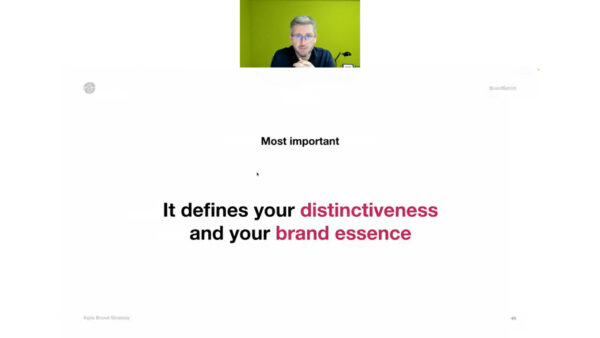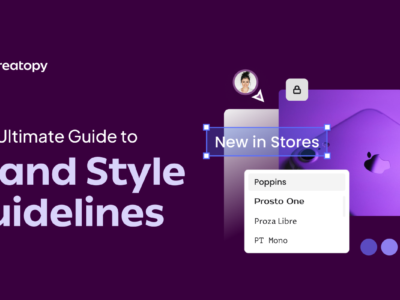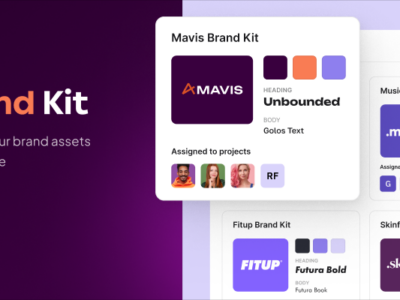Brands define us. We dress in a certain way, drive a specific car model, and use lots of services that we relate to.
But how did they get to be our choice in the first place?
In this Creatopy webinar, we wanted to get a better understanding of what a brand is and learn about the role of brand strategy in marketing.
In this fast-paced world, it’s important to create a relevant and sustainable brand if you want to have a successful business.
That’s why for this webinar, we invited Dalibor Vasiljević, the co-founder of Brand Sprint, to make us understand the importance of agile brand strategy, how to bridge the gap between user needs and business, and more.
Below, you can find the written format of the webinar if you prefer to read it. Otherwise, you can access here “The Ultimate Way to Build a Brand Strategy” webinar recording.
Now, let’s dive into the subject.
“There is no ultimate way to build a brand strategy. There is only a smart way.”
A. What is the reality of the world in 2022?
E. What is the purpose of a brand?
F. What are the pillars of brand positioning?
A. What Is the Reality of the World in 2022?
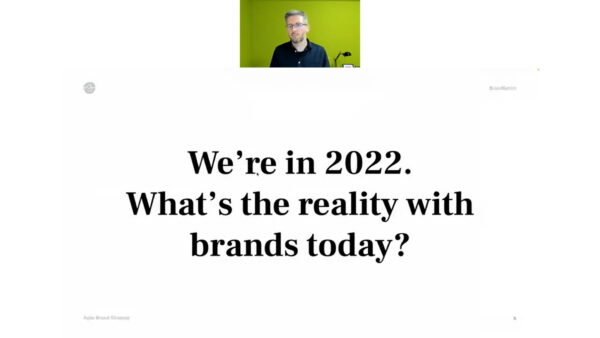
The world is changing faster than ever, and at the same time, customers behavior and business environments are changing with it.
It’s essential to be aware of what happens to properly adapt and answer all the challenges to build a strong brand and decrease the risk of being left behind.
Let’s see what brands are dealing with right now:
1. Consumers have the power
Due to social media channels and digital devices, consumers have become critics and ambassadors. Think about the sea of influencers that grows each day.
They have the power to dictate when, where, and how they engage with brands.
2. Competition is everywhere
Millions of brands are born each year. Think about how digital technology and internet access have enabled thousands of entrepreneurs and their startups.
Consequently, it is a real challenge to build a brand today that stands out and differentiates itself.
3. It’s a fast-moving world
Everything is changing so fast. Human behavior is constantly evolving, and as a result, consumers change their habits quickly.
It’s all because of the enormous speed of technological developments. We can say that even due to the disruptions that affected all the markets, such as climate change or the pandemic.
4. Getting lost in the sea of options
For people unfamiliar with marketing strategies, it can be challenging to keep up with faster decision-making processes and to know how, where, and to whom they should communicate so that the customers will engage more.
We have many social and marketing platforms that make it very hard for brands to decide where and what to start with.
5. The forever and always kind of strategy is gone
There was a time when big brands could build a strategy and leave it untouched for decades and still be relevant.
Those days are gone. The leaders of the future need a proper mindset, frameworks, and tools to overcome their brand challenges.
6. Remote collaboration is here to stay
In this post-pandemic world, most of us work remotely, and the chances of bringing everyone back to the office no longer exist as we saw the potential of hiring people all over the world.
The hybrid work is the future. For this, we need tools to communicate, collaborate, and co-create both remotely and face-to-face.
Knowing all these challenges that brands face, you need an agile brand strategy mindset.
Meaning you need to build a set of skills to protect you from becoming an irrelevant brand.
B. What Is a Brand?
Before diving into learning how to avoid irrelevance, we must know what a brand is.
Famous writer Marty Neumeier said that a “Brand is a person’s gut feeling about a product, service, or an organization.”
Jeff Bezos stated that a “Brand is what people say about you when you are not in the room.”
A brand is your reputation, it’s how people perceive you, and it is also a shortcut for the decision-making process.
But how do brands become brands?
“Not easy, but not impossible.”
To get your brand out there, you should focus on:
- Becoming the best at what you do and keep doing it;
- Keeping consistency so that the customers will know what to expect from you in the long run;
- Being radically different from the others (e.g., Apple built a computer with phone options, Tesla built a computer with attached wheels);
- Being innovative and creative;
- Creating emotional connection (e.g., Harley Davidson).
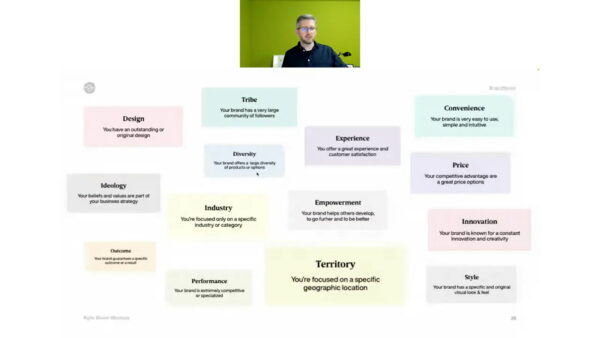
You must keep in mind that before becoming a brand, you first need a brand strategy.
C. What Is a Brand Strategy?
A brand strategy is important because it defines everything you’re going to do next.
It is your basis for business strategy, marketing strategy, your company organization, and culture for your products, services, and experiences.
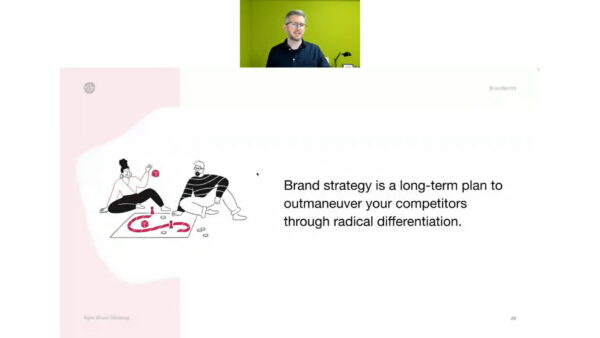
You need to outmaneuver your competitors’ brand strategy by being radically different. We can say that brand is the process in which you define how and what your brand will be.
Now we know what a brand is, what a brand strategy is, but we often hear about branding.
Branding is not just creating a visual identity and a logo.
Branding is the process of transforming a specific organization, product, or service in what we defined in the brand strategy.
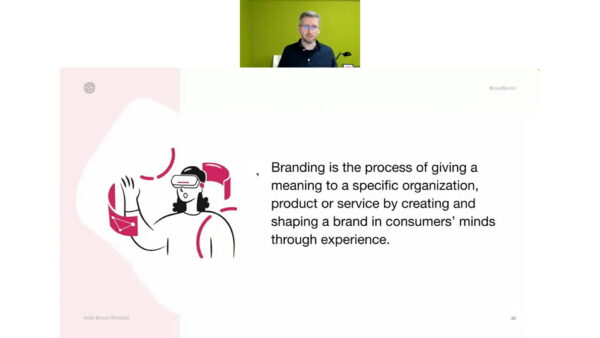
It’s important to state the difference between marketing and branding.
D. What Is Branding?
Branding is strategic. It’s the definition of things. Marketing is tactical. It’s the execution.
Branding is pulling out the customers, while marketing is pushing out information.
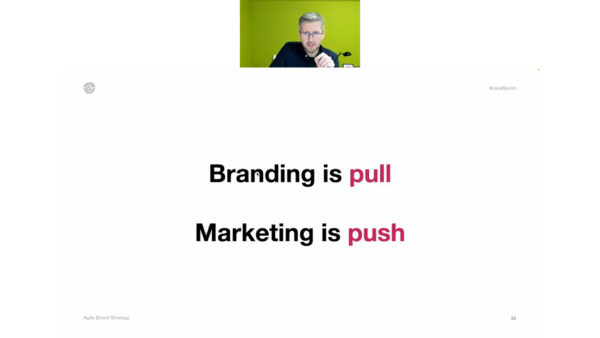
What defines a strong brand is its ability to make people come back.
You can invest and spend huge amounts of money in marketing and still not build brand loyalty.
Some of the reasons why companies are unable to build brand loyalty are because:
- They don’t have a brand strategy
- They don’t tell people why they should stay and be loyal to their brand
- They don’t retain customers
By defining your customers, your brand strategy, how you are different from your competitors, and how you are relevant to your customers, your loyal buyers will expand, resulting in less investment in marketing.
E. What Is the Purpose of a Brand?
The purpose of your brand is well said by Marty Neumeier. It is “to get more people to buy more stuff for more years at a higher price.”
It is in our DNA to offer more money for quality products. We think they last longer and are more valuable.
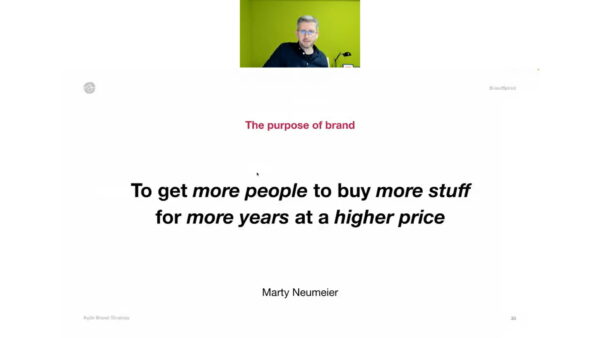
How can you quantify the power of a brand?
A strong brand increases the perceived value of products and their services. The stronger you are, the more financial value you can build.
If your products and services are high-quality and you increase your prices by 30%, you have a higher chance of not losing your clients because they are positioned on your brand, not your prices.
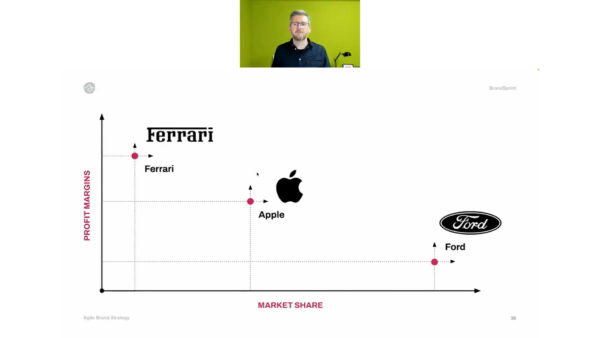
How else can a brand strategy be useful?
- It defines the narrative for your marketing strategy
- Generates the feeling of a greater value
- Brings along more customers through the power of word-of-mouth marketing
- Creates brand loyalty
- Generates trust in the eyes of the customers
- Creates the base for your company culture, and it will help you with employer branding because people no longer work only for money
- Defines your purpose, mission, and vision
- Portrays the archetype of your brand
- Explains how your brand is useful to your customers
- Describe where you interact with your customers

F. What Are the Pillars of Brand Positioning?
The distinctiveness and brand essence are what Dalibor and his team call in BrandSprint, the pillars of brand positioning.
There are four situations that can define your brand:
- Good, but not different—the situation in which you cannot become a strong brand because you do what everyone else is doing;
- Good, but different—where what you do is useful, you do things in an original way, making the customers fall in love with your brand;
- Not good and not different—this is the survival mode, where you are not good at what you do, but you find consumers who will buy your products and services for the first and last time;
- The worst you could do is be different and not good—this is the death of brands.
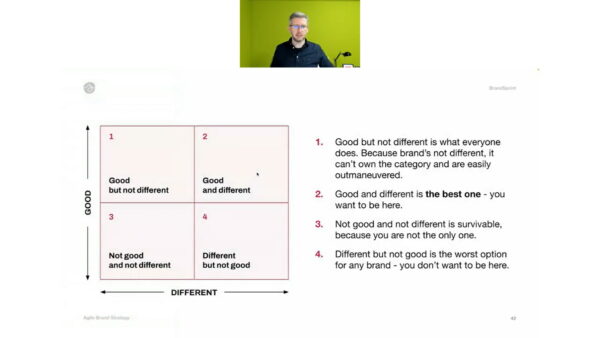
Based on the image above, if you want to be the strongest brand on the market and to assure your brand’s survival, you should take into consideration the four pillars of brand positioning:
1. Authenticity
Being authentic means being who you are. You must know your values, customer-centricity, and UX when you create your brand. All these and more have a high impact on your brand.
2. Difference
You need to be different as a visual identity and in every way. A different brand is easier to spot. But it’s not enough to be different. You must be useful as well.
3. Relevance
You need to know for whom you are authentic and different. Relevant brands are focused on empathy and customer-centricity because they create around their customers. They pay extra attention to their customers’ dreams and pain points.
4. Sustainability
Protect your authenticity, difference, and relevance by being sustainable because a similar brand may appear overnight, and you need to sustain yourself. To become sustainable, you must define your brand essence.
Brand essence is all about storytelling and how you present your brand in front of your audience.
Think of Volvo, the car manufacturer. Their brand essence is safety. It is not the safest car, but it presents itself like so, and it would take years for another brand to replace it.
“Brand strategy has become a battle of categories. The objective is to become your own category in your customers’ minds.”
Now it’s a good time to stop and think about what your brand is associated with and where your brand stands in confirmation of the brand pillars.
G. What’s the Next Step?
Before diving into practice, you need some theory to understand how it all works.
Marty Neumeier’s books are excellent to get you started.
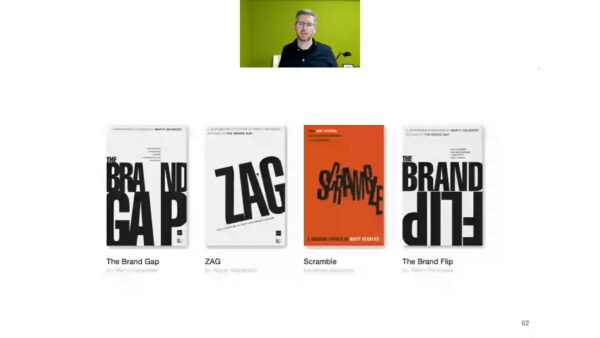
H. What Is Brand Anatomy?
To execute your brand strategy, you need a process, a framework to help you create results.
The BrandSprit framework is based on brand identity, experience, and strategy.
They want to teach people the agile approach and the tools necessary to build the brand experience and identity.
Below you will find the brand anatomy viewed by BrandSprint that states that you must align your brand strategy and expression.
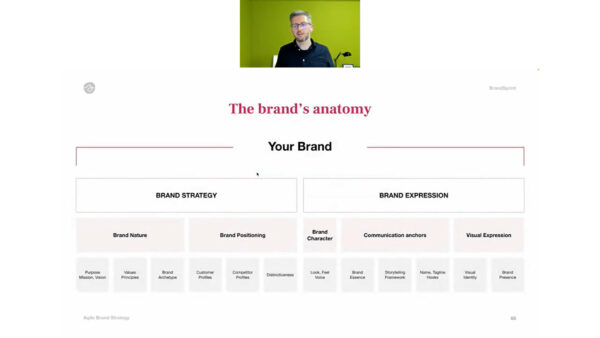
The brand is in the middle of strategy and execution. The strategy is where you decide all the details regarding business model, brand nature, relevance, differentiation, market position, and many more.
The execution strategy refers to the naming, logo design, identity design, web design, messaging, and marketing.
Most brands focus only on execution without carefully planning the strategy part.
I. BrandSprint Framework
Over at BrandSprint, they’ve created their framework of working with brands. They believe in:
- Creating a brand strategy faster and more efficiently by promoting co-creation. They firmly acknowledge that three brains are better than one;
- Getting the information from the best people in your team to significantly improve the brand strategy and the way you do things;
- Educating their customers by developing an agile brand mindset to stay relevant;
- Teaching their customers how to evolve their strategies as the world evolves around them.
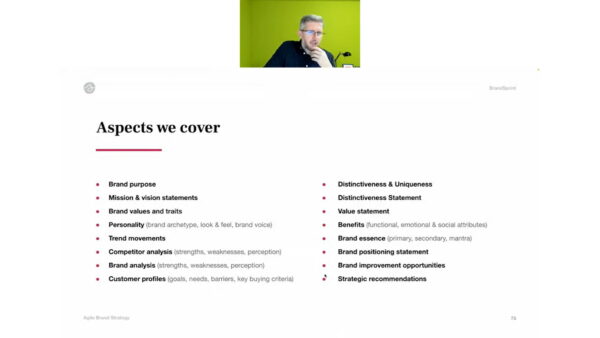
Dalibor and his team apply all mentioned above, then they visually create a Miro board and discuss online or live, depending on the client’s needs.
One important subject discussed in this webinar are the touchpoints stages of brand experience and purchase:
- Before the experience (How do you create the desire for your brand?)
In the beginning stage, most brands focus on the marketing part. They target people that don’t know their brand. In this stage, most brands spend all their money.
- During the experience (How is your brand helpful for your clients?)
Fewer companies focus on how customers perceive their products or services or ask themselves if they’re helpful for their clients. It’s essential to connect everyone who might relate to the brand experience and then work on it.
- After the experience (How do you interact with your customers after the experience?)
More than half of brands don’t consider staying relevant to their clients after purchasing to build their brand loyalty.
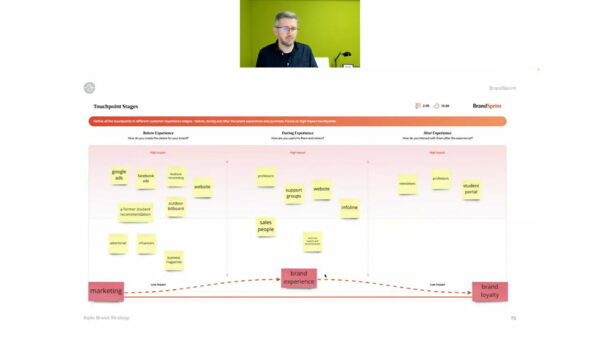
Q&A
Robert: What are three elements you should focus on to have a sustainable brand?
Dalibor: That’s a great question. The first one definitely refers to not being able to be replaced easily. It’s not really easy for me to replace my Apple devices because they’re really useful to me. And if I have something that is less useful, then I have a problem. It’s because we people like patterns, we like to do things in the same way, and if anything changes, that makes us uncomfortable. So I will have emotional suffering if I can’t work as I do. That is perceived value. If you find a way to retain customers even if you become more expensive, this is a great thing. Because this means you’re tough to be replaced. You know your customers so well that everything you do is useful to them. We do this for people as well. And the third thing is probably connected to the principles. If you have principles as a brand, such as ecology, education, performance, and then my mindset is also worried about these principles, this means I will be more attracted to your brand. It’s similar to the people around us who have the same values and principles as we do. This means compatibility. These are the three elements.
Final Thoughts
We hope this webinar offered you some great insights about how vital brand strategy is in today’s world and how to build or strengthen your brand.
If you want to know what else Dalibor mentioned in the webinar, you can watch it on-demand here.
See you next time!


